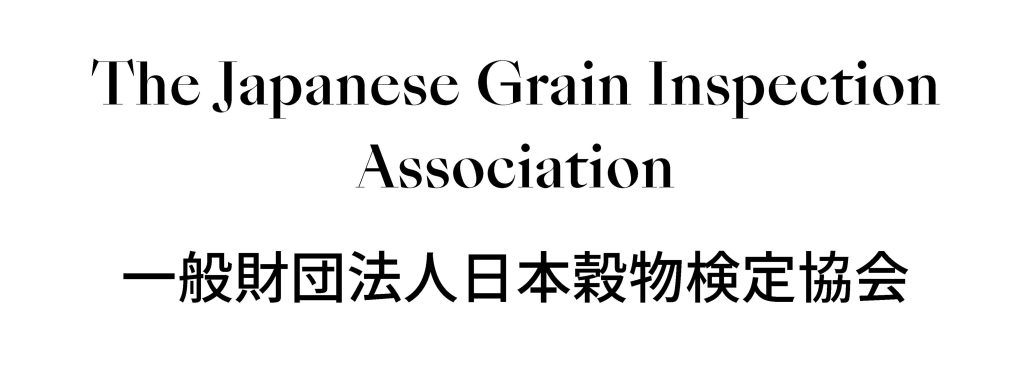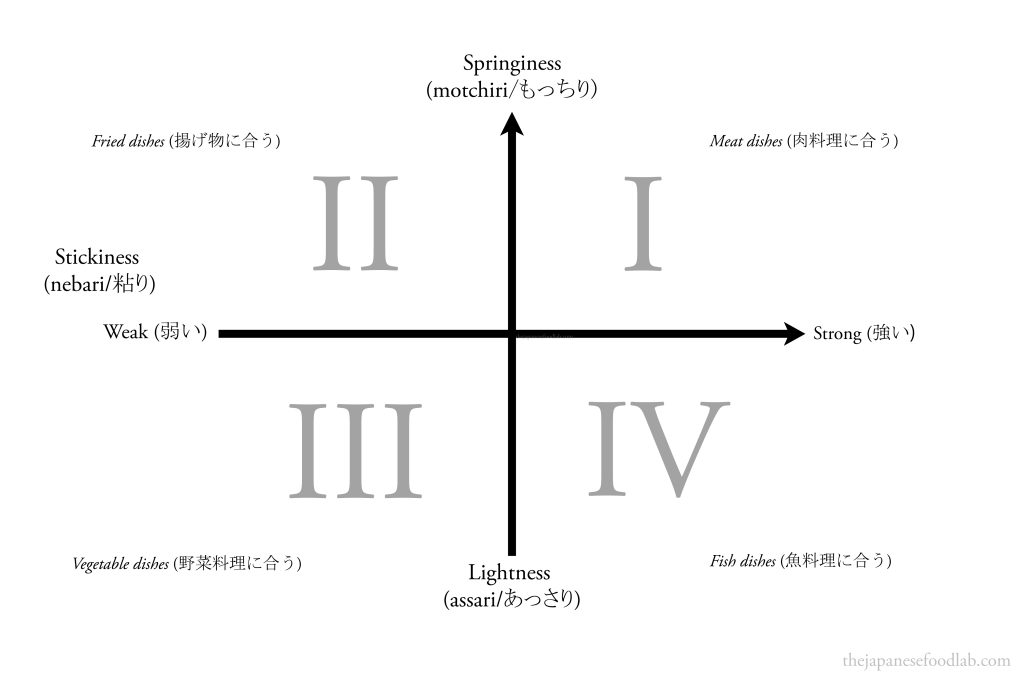
There are two main formats in which the qualities of a rice variety are communicated in Japan. Firstly, there is the Japanese Grain Inspection Association which carries out an evaluation before assigning each variety a grade. Secondly, there are the different stakeholders in the rice industry, from rice specialty stalls and rice cooker manufacturing companies, all the way to Rice Meisters (お米マイスター), who describe the characteristics of the rice in order for consumers to make better choices. In this article, we’ll look at the various ways in which rice is evaluated in Japan.
The Japanese Grain Inspection Association (一般財団法人日本穀物検定協会)
No discussion about Japanese rice would be complete without mentioning the Japanese Grain Inspection Association. As a public organization under the jurisdiction of the Ministry of Agriculture, Forestry, and Fisheries in Japan, their primary function is to inspect and certify the quality of grain for both domestic and international markets.
They also carry out a range of services including testing to determine the quality of the grain, such as measuring the moisture content, protein content, milling yield, and the presence of foreign materials or contaminants. The results of these inspections are then used to determine the grade of the grain and provide certification for its quality. It also conducts research and development activities to improve grain quality and storage technologies, and provides training and education programs for industry professionals.
What is Special A Japanese rice? (特A米とは?)
While all the above plays a crucial role in maintaining the industry standard of Japanese rice, what we and many rice marketers pay most attention to is the yearly rice grading (米の食味ランキング試験) that is carried out by them. During this grading, rice varieties from different production areas are blind taste tested by a panel of judges against a standard rice and evaluated on the following six characteristics:
- Appearance
- Taste
- Fragrance/Aroma
- Hardness
- Stickiness
- And a final overall impression
The standard rice that is used in comparison is a blend of koshihikari rice from many different areas. After the comparison and evaluation a grade ranging from Special A, A, A’, B, and B’ is given out. A rice that obtains an A’ grade signifies that it has reached an evaluation equal to that of the standard rice, meaning that a grade of B and B’ signifies that it is lower quality. Meanwhile, the highest grade of Special A is reserved for rice that meets the gold standard.
This grading carries major commercial implications as obtaining a Special A grade basically guarantees demand for your rice from consumers and also interest from farmers who are looking at increasing their profits. Therefore, being able to breed and then grow rice of Special A quality is basically the ultimate goal of a region.
However, as this grading of quality has been carried out yearly since 1971, the same variety of rice grown in the same region might not be able to maintain its Special A grading from year to year. As such, you can easily think of it akin to wine region vintage charts but for Japanese rice.
Japanese rice selection charts (米品種銘柄別食味チャート表)
Throughout the internet, you’ll find quite a few different charts (or indices) that can be used to understand a particular rice’s qualities.
What is a Japanese rice selection chart?
A rice selection chart attempts to describe the characteristics of each rice variety in terms of mouthfeel and texture. They stand apart from the grading done by the Japanese Grain Inspection Association in that they do not attempt to rank the rice varieties according to a hierarchy but allow for comparisons. These charts are targeted at everyday consumers.
Typically, a rice selection chart consists of a cartesian plane with mouthfeel firmness or stickiness (粘り) running from left to right and texture or sweetness (甘い) running vertically. Each individual variety is then plotted on this graph to allow you to judge one variety against another.

Now if this sounds confusing to you don’t worry. Initially, we also found it incredibly hard to navigate different rice selection charts. This is largely due to the difficulty in translating certain descriptive adjectives from Japanese to English but also due to the fact that there are so many different versions of these charts. If you’re interested in how to interpret these charts in more depth, or the nuances of the translations, read our article on a closer look at Japanese rice selection charts. Else, let’s explore what a Rice Meister is and why there exists so many interpretations of rice selection charts.

What are Japanese Rice Meisters (お米マイスター)
Just like how a Master of Wine denotes an individual who possesses the highest standard of professional knowledge in the wine industry, a Rice Meister is the title awarded to individuals with expertise and experience in all things related to Japanese rice. Individuals are required to sit for a written examination which is set by the Japan Rice Merchants Association (日本米穀商連合会). There are two grades of the Rice Meister qualification. The first grade, the three star certification (三ツ星お米マイスター), requires candidates to sit for a written test to verify your knowledge of:
- Laws and regulations
- The characteristics and history of rice varieties
- Polishing, preservation and storage technology
- Cooking and blending characteristics
- Customer service
- Nutrition
Once the three star certification has been achieved, candidates can then attempt the highest grade, which is the five star certification (五ツ星お米マイスター). At this level, candidates have to attend a one-on-one interview with an examiner on topics ranging from appraising brown rice to the ability to advise and instruct commercial businesses and what rice to buy and how to best cook it.
Why are rice selection charts made?
The roughly ~2000 three star and ~500 five star certified Rice Meisters are spread across the entire country’s rice industry, from wholesale suppliers, growers and exporters, all the way to consultants for electronics companies who manufacture rice cookers. In order to efficiently communicate information to their customer base, many of them will create a rice selection chart as a way to summarize their opinion on various rice varieties. This in turn allows people to make more informed choices about the rice they wish to buy, be it for home consumption, running a university cafeteria or even a restaurant.
Why are rice selection charts so different from one another?
Many of these professionals taste numerous different varieties of rice each year produced in different areas and regions and thus may have varying points of view about where a particular variety of rice may sit on the chart. Because of the subtle differences between microclimates and individual farms, there sometimes even exists wide variation between the same variety grown in the same prefecture. For example, a specialist rice seller that works specifically with a small handful of farmers that he has a close relationship to, would taste rice that is very different from a large company that packages and distributes rice at a large scale and who may also have ownership or a stake in the various rice farms they source from. As such, even for the same variety of rice grown in the same prefecture, you’d most likely find variation in where they sit on the spectrum of stickiness and sweetness depending on who created the rice selection chart.
This of course does not mean that the business of tasting rice is all a farce, as even when accounting for slight differences in taste and texture from one batch of rice to another, you’ll find that any particular variety of rice will still exist in what is considered an acceptable range for its taste or texture. For example, you’ll never find the Seiten no Hekireki variety classified as super firm and lacking in sweetness.
Here again the analogy with the wine industry is an appropriate one. Just because different wine critics and writers have differing opinions on a certain wine region, or assign different scores to various wines, doesn’t mean that one or the other person is wrong. Differences can arise not only from personal preference, but bottle variation and vintage differences etc. Similarly, you’ll find differing viewpoints for the same rice varieties expressed in rice charts.
This brings up another source of variation- vintage differences. Luckily (or unluckily depending on how you view these things), rice tastes the best at its freshest and does not keep well for years at a time. Therefore, slight variation in characteristics and quality from different years is not as relevant as compared to wine as rice is usually not consumed more than a year after it’s dried. However, it does mean that a rice selection chart can be quite specific for rice of that year and most sources do not update their charts yearly as it would be too big an undertaking. For a more accurate year by year evaluation, the grades assigned by the Japanese Grain Inspection Association elaborated on above are more appropriate.
All in all, it’s ultimately much better to see any of the evaluations mentioned here as general guidelines. Instead, your aim should be to build up more and more experience and develop your own taste preference.